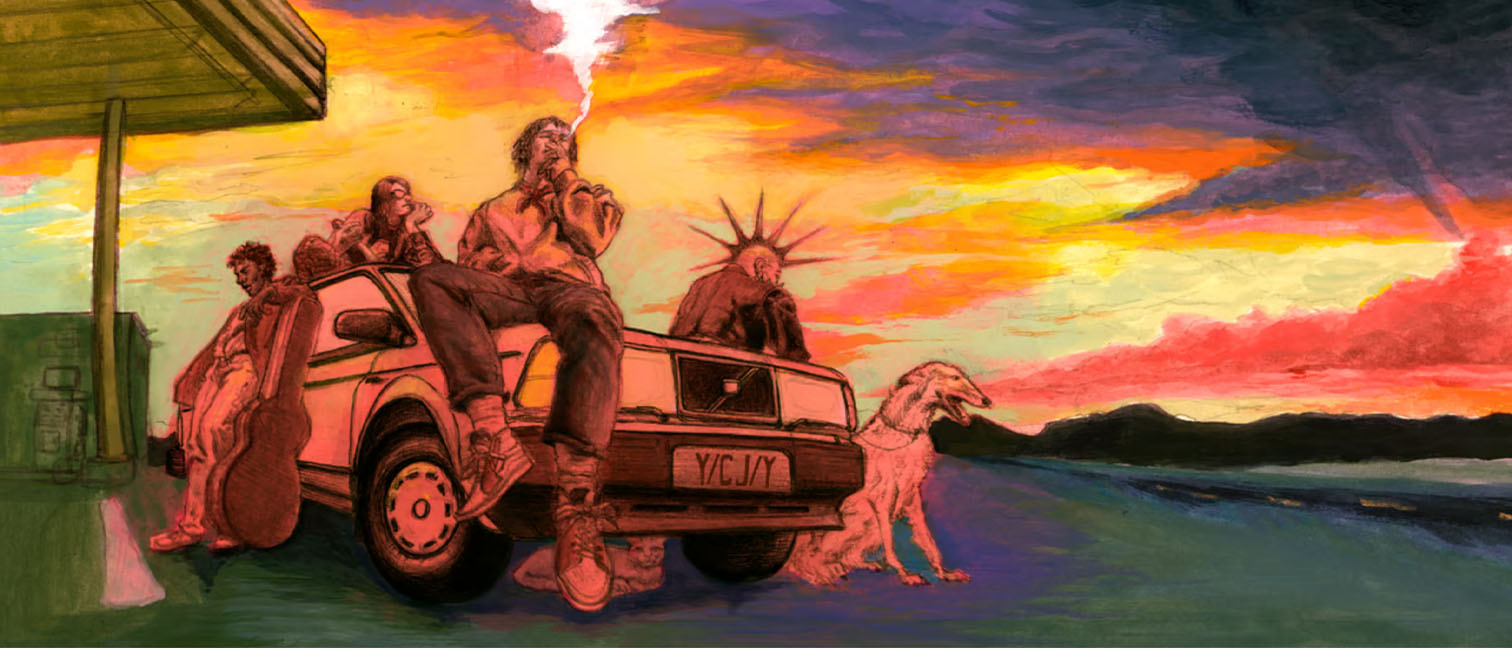For
- Gorgeous pixel art
- Amazing indie soundtrack
- Atmosphere of a road trip
Against
- Steep learning curve
- Can get repetitive
Why you can trust Creative Bloq
Keep Driving captures that unparalleled sense of freedom and opportunity that comes with owning your first car. The summer is rolled out ahead of you like a red carpet, and you have zero responsibilities: your only goal is to get to a music festival on the other side of the country at the end of August. How you get there, and what you get up to on the way, is entirely down to you.
The thing that immediately stands out is the evocative and meticulously detailed pixel art (read our how to break into pixel art feature). Keep Driving looks gorgeous in screenshots, but it’s even better in motion, with wonderfully characterful animations of your vehicle bumping along a busy road full of lorries and cars, while scenes of mountains, forests and cities stream by behind.
Keep Driving features some of the best pixel art I’ve witnessed in quite some time, and the style perfectly fits with the theme of a nostalgia-ridden road trip in the 2000s. (This indie dev likes using Unity to achieve this style, read our guide to the best game development software for a little more detail.)
Choose your wheels
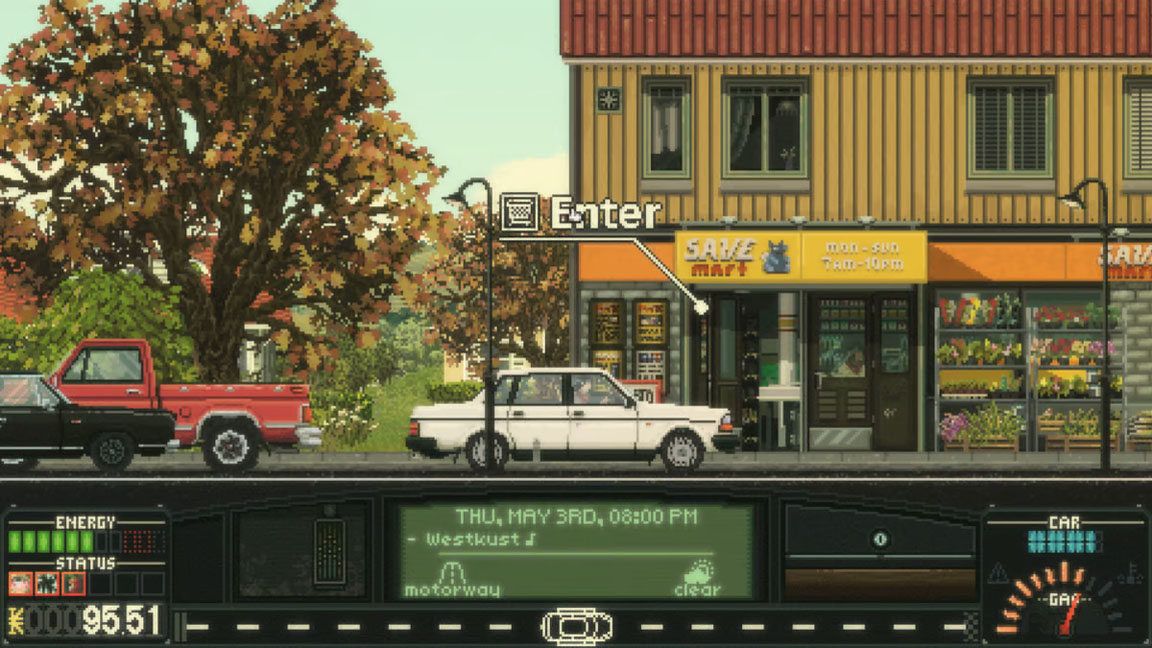
At the outset, you get to choose from a beaten-up sedan, pick-up truck or muscle car, then it’s a case of unfurling the map and picking the first stop on your adventure. The car drives automatically, but every now and then an event will pop up. Sometimes it’s a moment of introspection, an idle thought that intrudes while eating up the miles, like ‘I wonder whether the clouds look different in other countries?’ But more often than not, it’s a battle. Of sorts.
These ‘battles’ range from getting stuck behind tractors or cyclists to being distracted by the sudden appearance of a rainbow. The sheer imagination and variety of the things you encounter is wonderful: one event involved being awed by an elegant falcon flying alongside the road.
The encounters each involve a series of icons popping up on your dashboard to represent your energy, petrol and cash, along with the car’s durability. The idea is to counter these by playing one of several cards from your inventory, each of which is etched with a particular pattern of icons. If you match an attacking icon, it disappears, while perfectly matching the exact pattern gives you an extra turn. But at the end of your go, if there are any attacking icons left with a ‘threat’ symbol above them, you’ll take damage to that particular trait.
Keep Driving is a complex machine
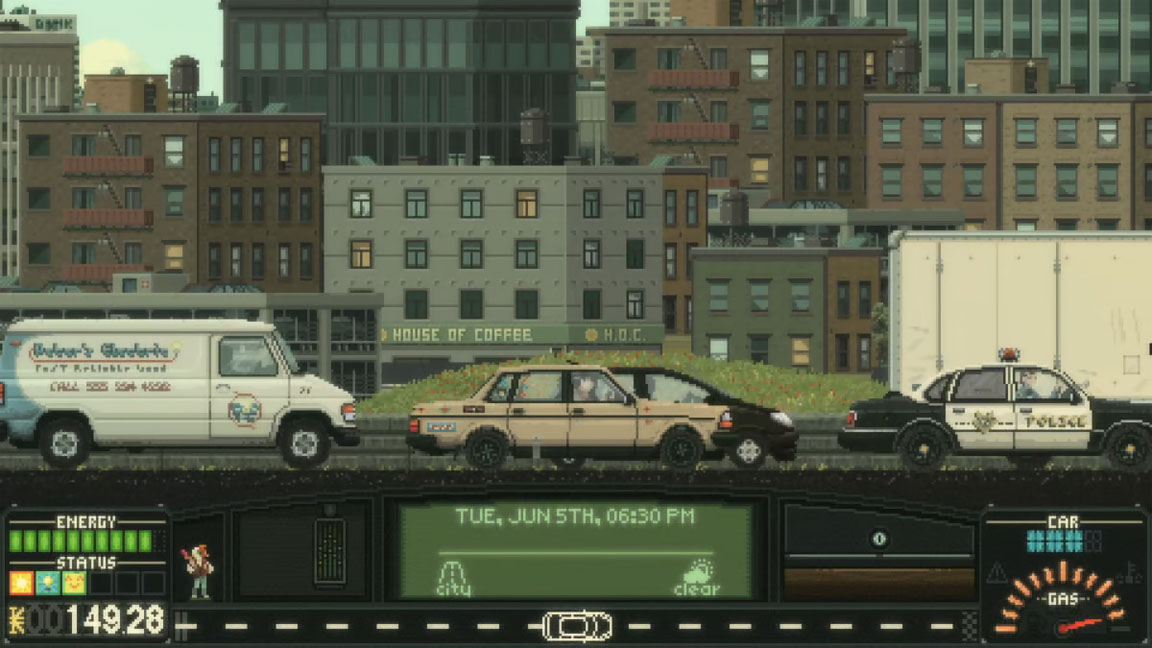
This combat mechanic sounds simple, but I found it overwhelming at first. You’re quickly deluged with buffs and debuffs like ‘Headache’, ‘Inspired’, ‘Happy’ and ‘Dirty’, and working out what they all mean and how to get them (or get rid of them) was a bit of a head scratcher.
Similarly, the many shops and garages you encounter are stuffed with a huge range of items and upgrades from fizzy drinks to fresh tyres, and getting to grips with what they all do and whether they’re worth buying took me hours of experimentation. My first couple of attempts both ended in failure when I either ran out of petrol or my car broke down and I didn’t have the cash to repair it.
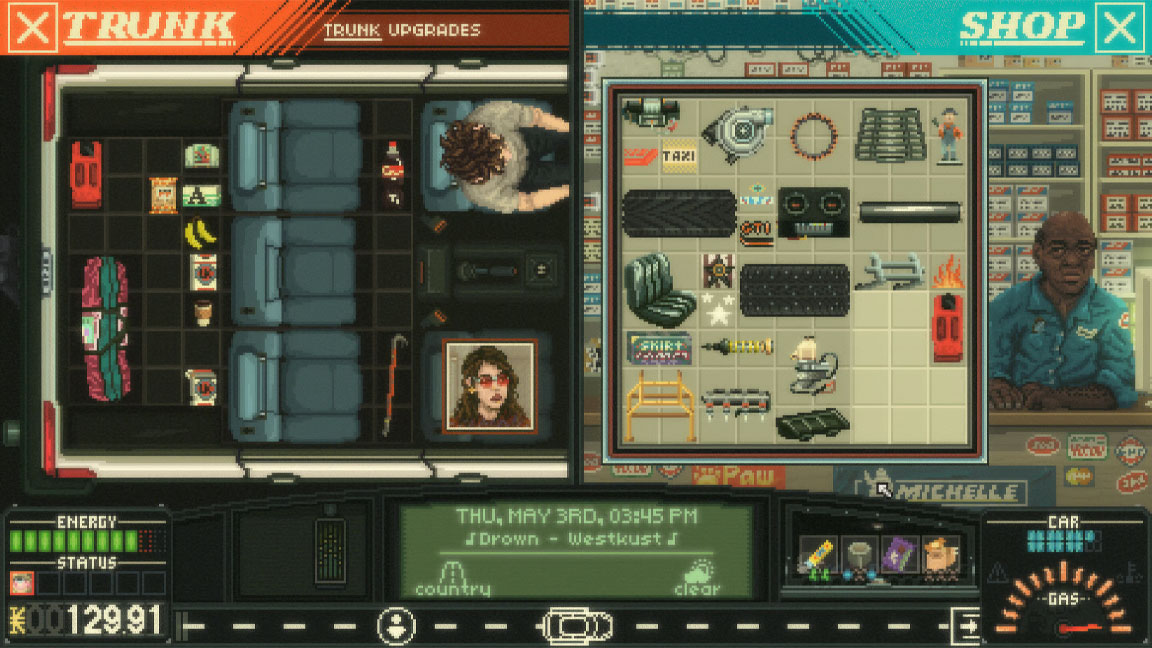
At its heart, Keep Driving is a management RPG that necessitates learning and understanding the systems underneath the bonnet and making them run as smoothly as possible. It’s about carefully managing resources: energy is the most plentiful, easily topped up by sleeping in your car, whereas cash is much harder to come by. In that sense it’s a fitting reflection of someone setting out for adventure in their twenties, brimming with time and energy, but seriously lacking in money.
Cash can be obtained by running errands and doing temp work in different cities, so success involves carefully planning your route via towns where jobs are available. Once I’d worked out how to keep up a steady cash flow, Keep Driving became far more enjoyable, and I felt more free to explore the many side quests and activities that pop-up along the way.
You can pick up hitchhikers who add more cards to your inventory, each with their own side quest. The runaway bride, for example, simply wants to go out and have fun, while The Suit – a dishevelled, unemployed businessman – is looking for work. Other quests involve entering a road race or visiting your dying grandma, and there are occasional moments when you can leave your car to explore the city or woods and discover items. Drug dealers might sell you packets of white powder. You can get drunk, too. But driving under the influence might see you being pulled over by the cops and sent to jail – one of several possible endings.
Keep Driving in sound and vision
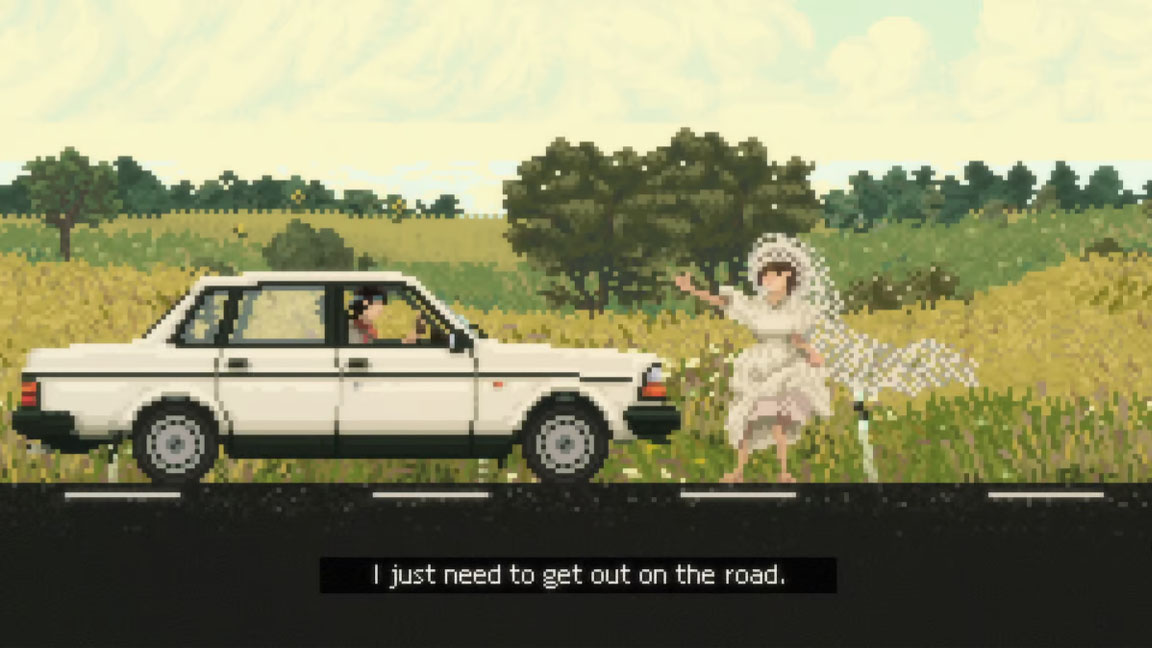
After hours on the road, the endless icon-matching battles can eventually get a little repetitive. But perhaps that’s the point. Road trips are equal parts boredom and adventure, and Keep Driving triumphs at capturing the spirit of what it feels like to be setting off into the wide unknown in your first car, time rich but cash poor.
Little details perfectly capture the time period, like the Nokia-style phone you can use to call your parents for help. Early on I wondered why the music had stopped playing, then I realised it was because the CD in the car stereo had finished. Of course! I’d almost forgotten a time when listening to music meant manually selecting an album rather than the fire-and-forget mentality of an endless playlist.
The music is utterly fabulous, too, featuring a plethora of Swedish indie bands like Wanderkust and Holy Now: ‘Wake Up’ by the latter is a particular banger that I’ve had on repeat since I set out on my first trip. And what a ride it’s been. Jump in the car, let’s see what’s out there.
Keep Driving: verdict
Keep Driving knows it’s all about the journey rather than the destination, and it perfectly captures the feeling of being young and free and foolish. The learning curve is initially steep, and the encounters can eventually get repetitive, but it offers a beautifully drawn and wonderfully charismatic adventure that you won’t forget in a hurry.

Thank you for reading 5 articles this month* Join now for unlimited access
Enjoy your first month for just £1 / $1 / €1
*Read 5 free articles per month without a subscription

Join now for unlimited access
Try first month for just £1 / $1 / €1

Lewis Packwood has been writing about video games professionally since 2013, and his work has appeared in The Guardian, Retro Gamer, EDGE, Eurogamer, Wireframe, Rock Paper Shotgun, Kotaku, PC Gamer and Time Extension, among others. He is also the author of Curious Video Game Machines: A Compendium of Rare and Unusual Consoles, Computers and Coin-Ops (White Owl, 2023).
You must confirm your public display name before commenting
Please logout and then login again, you will then be prompted to enter your display name.
